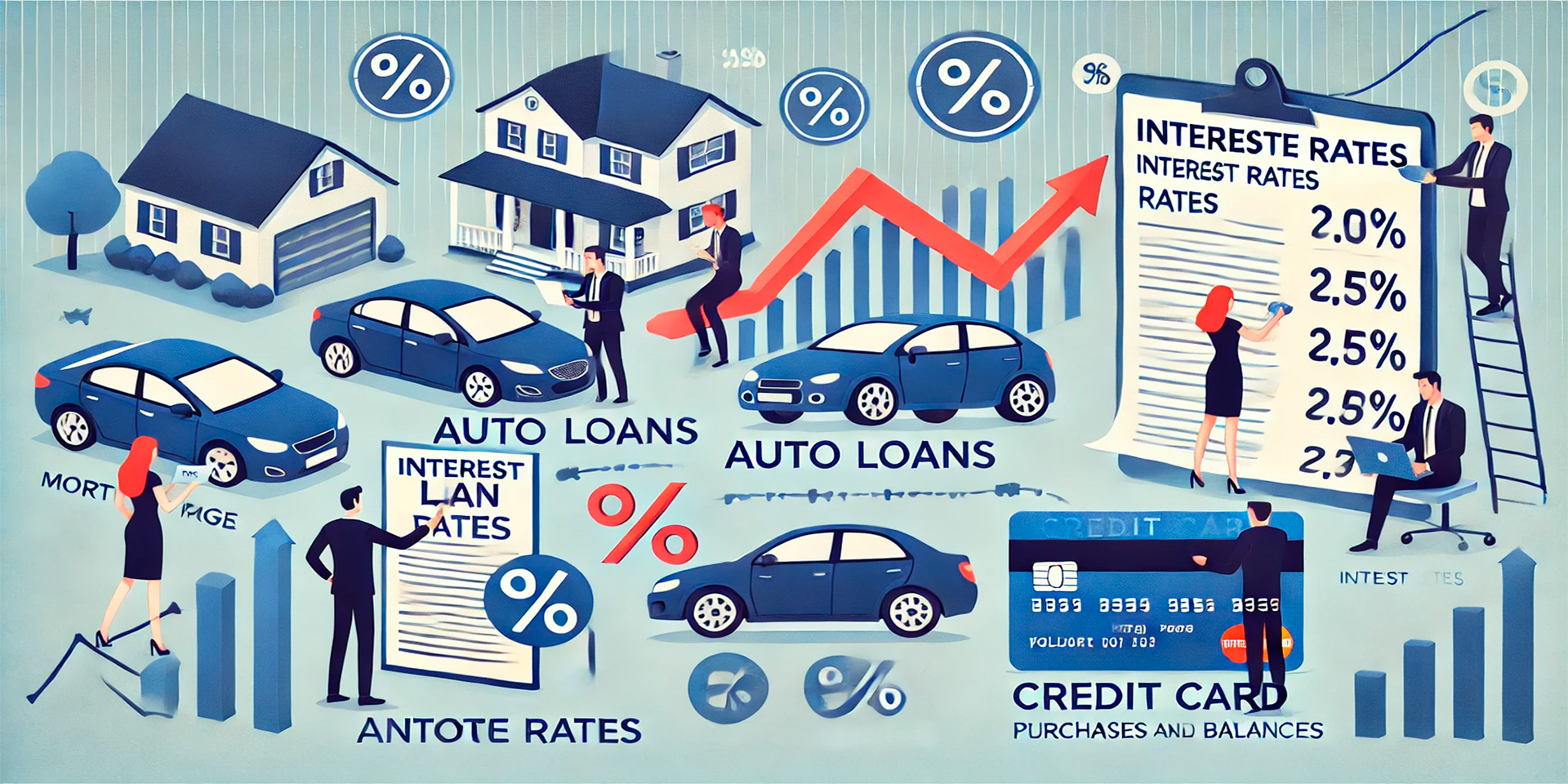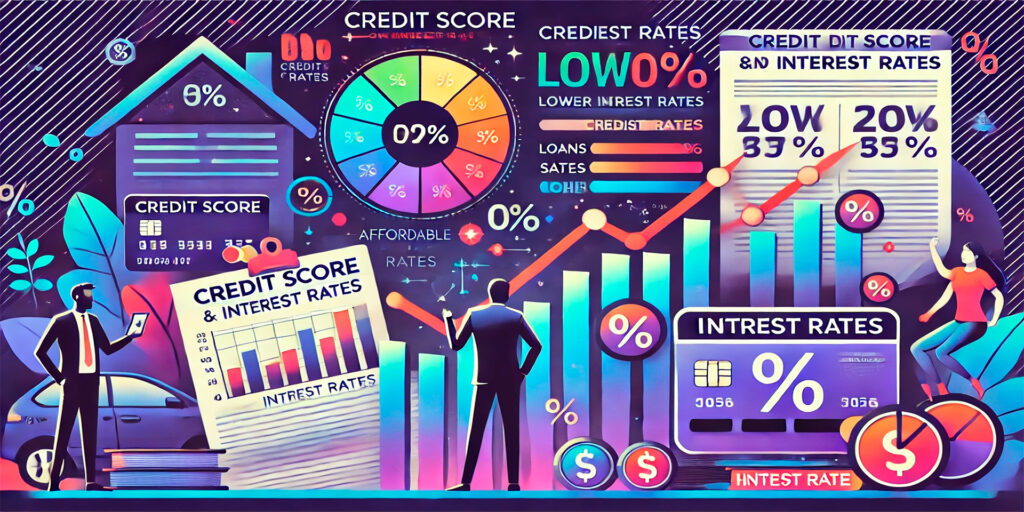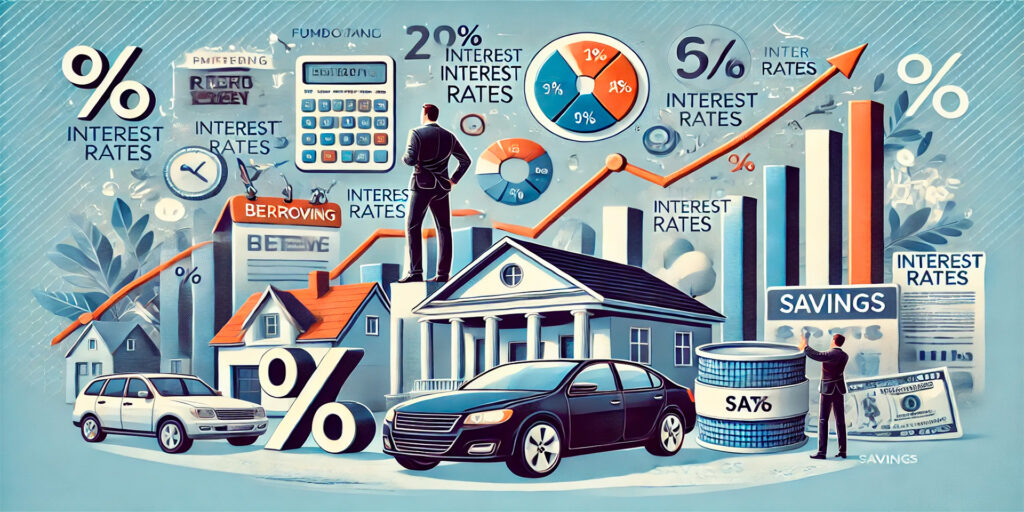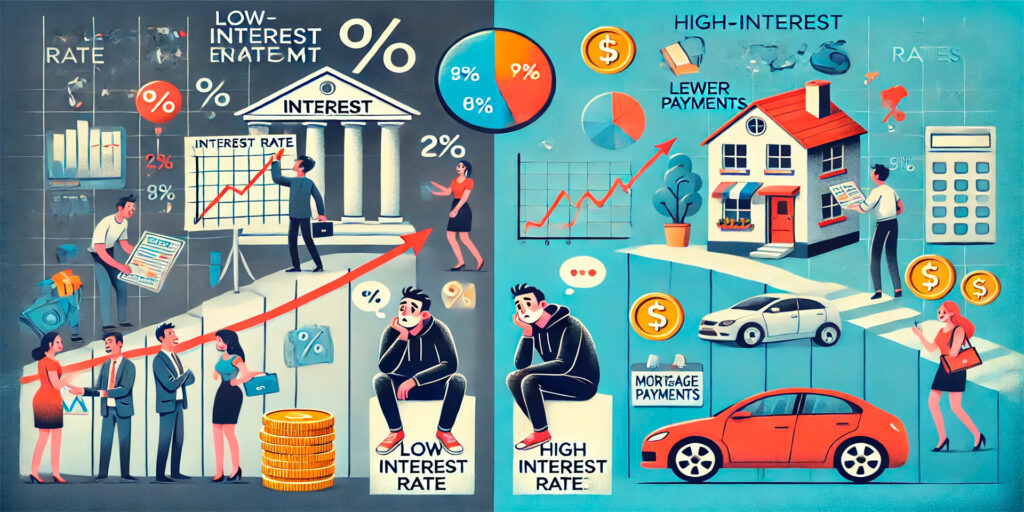Interest rates are a central factor when making any financial decision involving loans, whether you’re purchasing a home, financing a car, or using a credit card. They determine how much you’ll ultimately pay in addition to the amount borrowed and play a pivotal role in shaping both the affordability and long-term costs of your financial commitments. As interest rates fluctuate, they influence not only the size of your monthly payments but also how accessible borrowing becomes for individuals across different credit profiles.
Interest rates are driven by a variety of factors, including economic conditions and your own financial standing. When rates are low, borrowing can be more affordable, allowing you to secure better terms on mortgages, auto loans, and personal credit. Conversely, when rates rise, the cost of borrowing increases, making it more expensive to take on new debt or manage existing loans. Whether you’re considering a long-term mortgage or trying to manage credit card debt, understanding how interest rates affect your loan options is essential to making informed financial decisions.
How Interest Rates Are Determined
Interest rates are influenced by a complex mix of external and personal factors. On a broad scale, central banks like the Federal Reserve set base interest rates to help regulate the economy. These base rates affect everything from mortgage rates to credit card APRs, as lenders adjust their offers based on these benchmarks. In times of economic growth, central banks may raise rates to prevent inflation, while they may lower rates during a recession to encourage spending and borrowing.
On a more personal level, your individual credit history plays a key role in the interest rates you’re offered by lenders. Lenders assess your credit score, debt load, and payment history to gauge your reliability as a borrower. A strong credit score typically results in more favorable interest rates, making loans and credit less costly over time. Conversely, if your credit score is low, you may face higher rates, as lenders view you as a higher-risk borrower. This can make even routine borrowing more expensive, leading to higher overall costs.
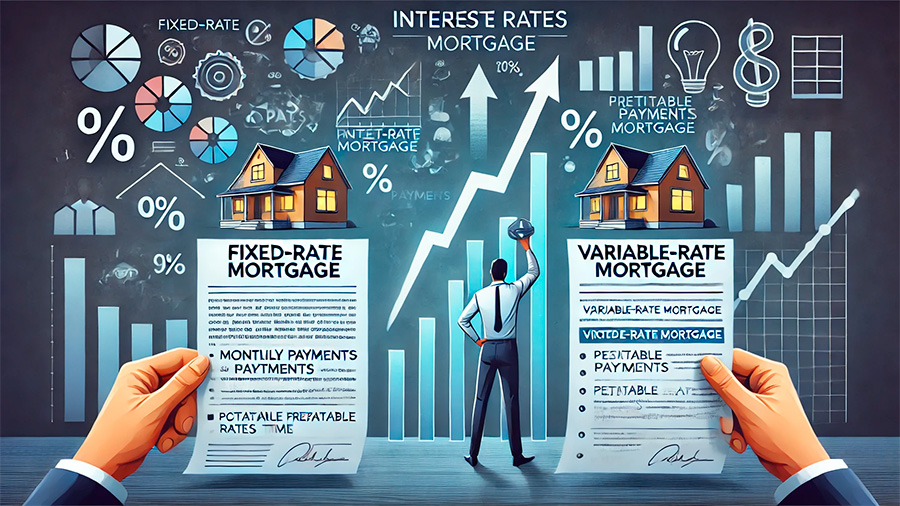
The Impact of Interest Rates on Mortgage Loans
One of the clearest examples of how interest rates affect loan choices can be seen with mortgages. Given the size and long duration of most home loans, even a small difference in the interest rate can have a major impact on both monthly payments and the total amount you’ll pay over the loan’s lifetime. For fixed-rate mortgages, the interest rate you secure at the time of the loan remains constant, giving you predictable monthly payments. This is especially valuable in periods when interest rates are low, as you can lock in a lower rate for the duration of your mortgage.
Variable-rate mortgages, on the other hand, come with fluctuating interest rates that adjust based on market conditions. While these loans may offer a lower rate upfront, they carry the risk of rising rates down the road, which can increase your payments significantly. For borrowers who anticipate a long-term stay in their home, fixed-rate mortgages may offer greater peace of mind and financial stability, while those planning to move within a few years might find an adjustable-rate mortgage more suitable during a low-interest-rate environment.
Auto Loans and Interest Rates
When financing a car, interest rates play an equally critical role in determining how much you’ll pay for the vehicle over time. Like mortgages, auto loans come with both fixed and variable interest rates, with fixed rates offering the benefit of consistent payments throughout the loan term. The rate you’re offered for an auto loan depends on a variety of factors, including the loan term, the amount of your down payment, and, most importantly, your credit profile.
Shorter-term auto loans often come with lower interest rates, allowing borrowers to pay off the vehicle more quickly while saving on interest. However, these shorter terms mean higher monthly payments, so it’s essential to weigh the balance between long-term savings and your immediate financial capacity. A longer loan term may offer lower monthly payments but can result in significantly higher interest costs over time.
Interest Rates and Credit Cards
Credit cards generally carry much higher interest rates than other forms of credit, which makes understanding how interest is calculated particularly important. The interest on credit card balances is typically referred to as the Annual Percentage Rate (APR). Unlike fixed loans, credit cards have variable interest rates, which can fluctuate with changes in the broader economy or your own creditworthiness. If you regularly carry a balance on your credit card, the interest charges can add up quickly, making it more difficult to pay down the principal amount.
Managing credit card debt becomes significantly more challenging as interest accrues. Paying only the minimum required each month can lead to a long cycle of debt that’s compounded by interest charges. To avoid this, it’s wise to pay off as much of your balance as possible each month to minimize interest payments. Alternatively, transferring a high-interest balance to a card with a lower introductory rate can provide relief, allowing you to pay down your debt without incurring excessive interest charges.
Personal Loans and Interest Rates
Personal loans, whether used for debt consolidation, home improvements, or major purchases, are another area where interest rates directly impact your financial decisions. Personal loans can be either secured or unsecured, with secured loans typically offering lower interest rates because they are backed by collateral. Unsecured loans, which don’t require collateral, generally come with higher interest rates, reflecting the increased risk to the lender.
The interest rate on a personal loan will depend on your credit score, the loan amount, and the lender’s policies. Shopping around for the best personal loan terms is crucial, as even a small difference in the rate can have a substantial impact on the total amount you repay. It’s also important to consider the loan’s repayment terms, as shorter loan durations usually come with lower interest rates, while longer terms may stretch out payments and increase interest costs.
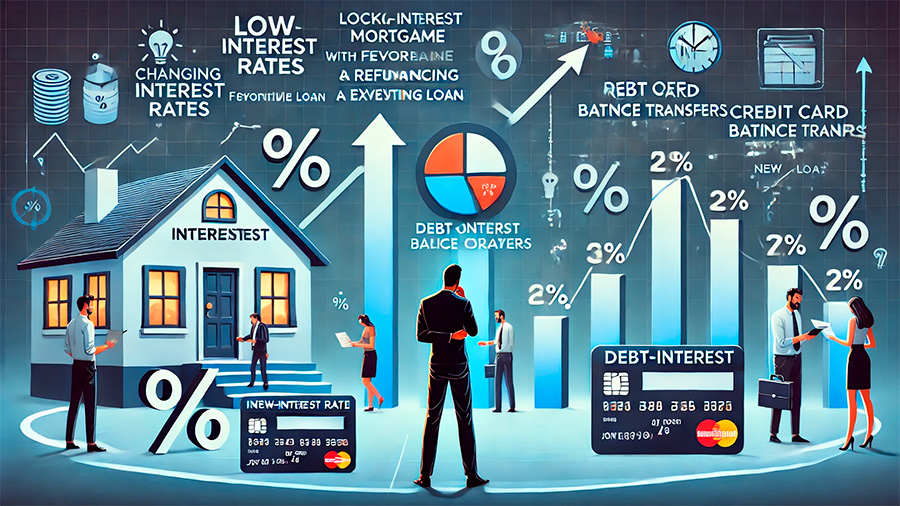
Managing Loans in a Changing Interest Rate Environment
Interest rates are not static, and changes in the broader economy can have a direct impact on your financial decisions. When interest rates are low, it may be an ideal time to lock in favorable terms on long-term loans like mortgages or refinance existing loans to take advantage of better rates. Conversely, when rates are rising, you might prioritize paying off high-interest debt or avoid taking on new loans until conditions stabilize.
For those managing existing loans, refinancing can be a powerful tool to reduce monthly payments and overall interest costs, particularly when rates fall. However, it’s important to weigh the upfront costs of refinancing against the long-term savings, as closing costs and fees can diminish the benefits in some cases. Similarly, keeping an eye on interest rates when using credit cards can help you identify opportunities to transfer balances or pay down debt before rates increase.
Conclusion
Interest rates are a critical factor in every financial decision, influencing the cost of borrowing and the affordability of various types of loans. Whether you’re considering a mortgage, auto loan, credit card, or personal loan, understanding how interest rates work and how they impact your financial commitments is essential for making sound decisions. By staying informed about current rates, managing your credit responsibly, and carefully evaluating your loan options, you can navigate the complexities of interest rates and make choices that support your long-term financial goals.

